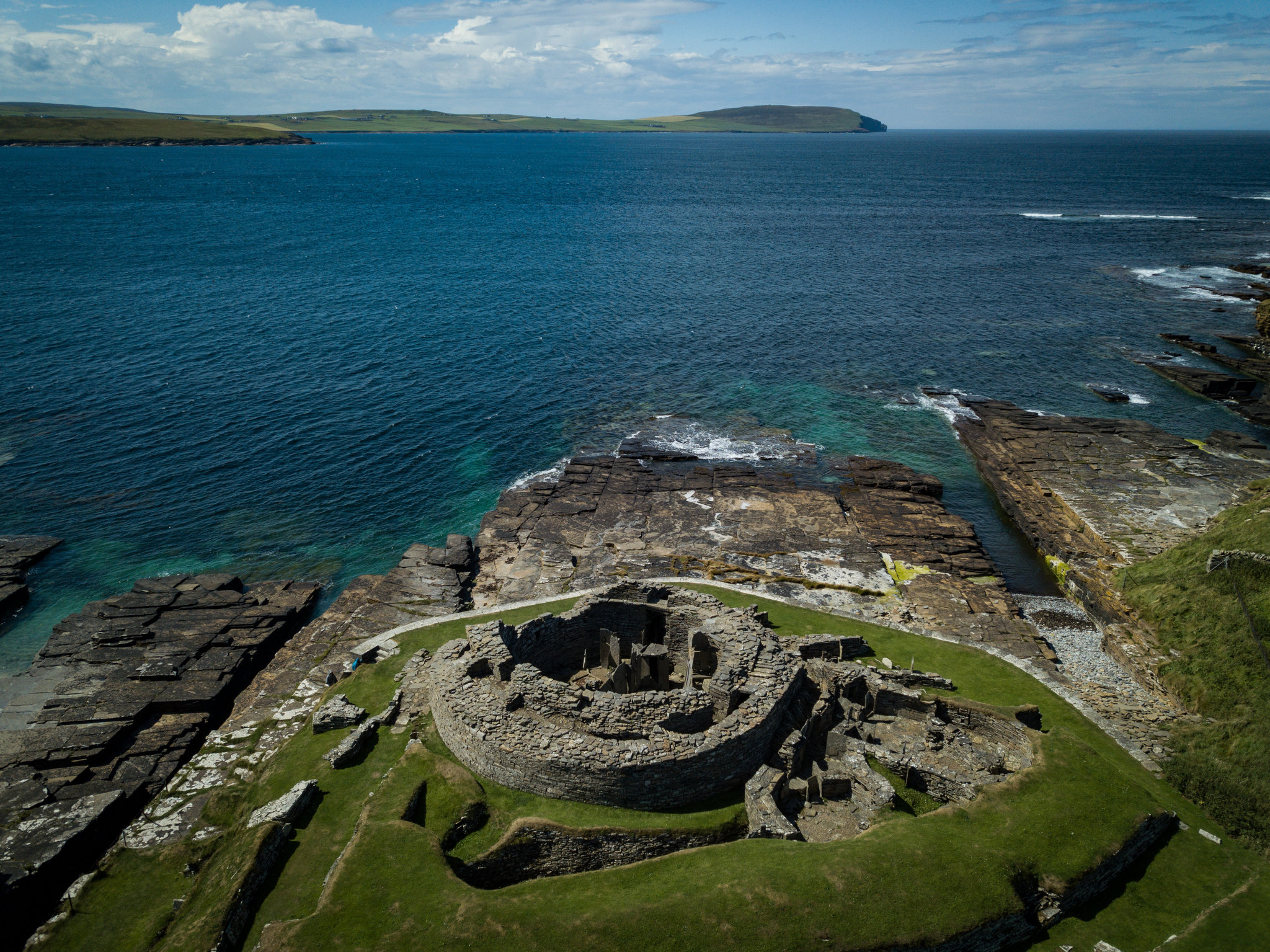
A current New York Times’ series is covering endangered cultural sites around the world – so far focusing on Easter Island, Lebanon’s cedar forests, and the Orkney Islands in Scotland – and highlighting the increasingly tenuous state of locations around the world in the face of climate change.
In the case of the Orkney Islands, thousands of remnants of stone age villages are at risk from rising sea levels and coastal erosion, exacerbated in recent years by climate change. In the words of one archeologist on site, “Heritage is falling into the sea” (Dwyer). Similarly, on Easter Island many of the famous moai statues lie near the coast and are threatened by the erosion of beaches and sea level rises projected to top five to six feet by 2100 (Casey). In Lebanon, rising temperatures are shifting the cedars’ prime ecological zone to higher altitudes and insect infestations, a new side effect of the warmer climate, have contributed to the decline of these forests, killing almost 10% of trees in some locations over the course of a decade. Now, less than 20 square kilometers of Lebanon’s cedar forests remain, and further trends of shorter winters and decreased rainfall are also threatening the remaining trees (Barnard).
Different steps have been taken to preserve these places in the face of their changing environments. The Orkney Islands and Easter Island, for instance, have both seen the use of seawalls to halt advancing tides and curtail coastal erosion, a moderately successful, but impermanent measure (Casey; Dwyer). In Lebanon, efforts have been organized to protect the cedars, but political turmoil has generally prevented a comprehensive plan to protect their national symbol. Local conservationists are attempting to plant thousands of new cedars, expand existing forests, and diversify locations to allow for greater resilience of the forests in the face of a changing climate (Barnard).
Attempts at preservation in these cases inevitably raise questions about best practices and intentions. Firstly, what does the preservation of these places, forecasted to be washed over or barren in the not too distant future, look like? In Scotland, artifacts and a burnt mound were moved to a heritage center from a vulnerable coastal location (Dwyer). On Easter Island, an ongoing debate centers on the best means for preserving moai statues and vulnerable petroglyphs – from anchoring them to sturdier structures or moving them entirely (Casey). However, does moving relics to a museum or building a seawall around cultural heritage sites destroy key aspects of their authenticity and fundamentally change them as places? There may be no simple solution to preserving these places and their cultural and historical character, but it is clear that, if the effects of climate change are left unaddressed, key places on Easter Island, in Lebanon, and on the Orkney Islands – and many more like them around the world – will continue to disappear.
Sources:
Barnard, Anne. “Climate Change Is Killing the Cedars of Lebanon.” – https://www.nytimes.com/interactive/2018/07/18/climate/lebanon-climate-change-environment-cedars.html?mtrref=www.nytimes.com
Casey, Nicholas. “Easter Island Is Eroding.” – https://www.nytimes.com/interactive/2018/03/14/climate/easter-island-erosion.html
Dwyer, Jim. “Saving Scotland’s Heritage From the Rising Seas.” – https://www.nytimes.com/interactive/2018/09/25/climate/scotland-orkney-islands-sea-level.html?mtrref=www.nytimes.com

I found your blog post to be very interesting on numerous fronts. The debate over whether moving relics and culturally significant sites and objects to museums or a different location lowers their cultural value and/or is inappropriate is highly relevant. I never actually considered this phenomenon, which I had always associated with Western cultural institutions pillaging sites in different areas of the world.
I think ultimately, however, if a site cannot be reasonably protected from environmental degradation, as much of the site as possible should be moved to a safer location. Obviously this is a subjective standard, but, realistically, some sites will not receive the financial attention required to keep them safe. In addition, some objects are simply easier to move than others, which should also be a consideration.
Here are some interesting links regarding this topic:
From UNESCO https://whc.unesco.org/en/climatechange/.
From the Union for Concerned Scientists https://blog.ucsusa.org/adam-markham/climate- change-is-the-fastest-growing-threat-to-world-heritage.